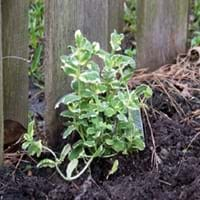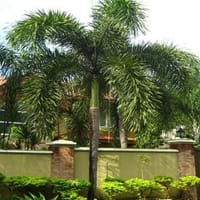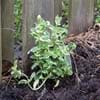Life Span
Perennial
Annual
Origin
Southern Europe
Australia
Types
Not Available
Not Available
Habitat
Cultivated Beds, Dappled Shade, Shady Edge, Sunny Edge, Woodland Garden
Forest edges
USDA Hardiness Zone
6-9
10-15
Sunset Zone
4, 5, 6, 7, 8, 9, 10, 11, 12, 13, 14, 16, 17, 18, 19, 20, 21, 22, 23, 24
H1, H2, 24
Habit
Spreading
Arching/Fountain-shaped
Minimum Width
Not Available
Flower Color
White, Pink
White
Flower Color Modifier
Bicolor
Bicolor
Fruit Color
Brown
Orange Red
Leaf Color in Spring
White, Light Green
Green
Leaf Color in Summer
White, Light Green
Dark Green
Leaf Color in Fall
White, Light Green
Dark Green
Leaf Color in Winter
Light Green
Green
Plant Season
Spring, Summer, Fall
Spring, Summer, Fall, Winter
Sunlight
Partial Sun, Partial shade
Full Sun, Partial Sun
Type of Soil
Clay, Loam, Sand
Loam, Sand
The pH of Soil
Acidic, Neutral
Acidic, Neutral
Soil Drainage
Poorly Drained
Well drained
Bloom Time
Summer
Early Summer, Summer
Tolerances
Drought
Wet Site, Drought, Salt
Where to Plant?
Container, Ground, Pot
Ground
How to Plant?
By dividing rhizomes, tubers, Stem Cutting
Seedlings, Transplanting
Plant Maintenance
Medium
Medium
Watering Requirements
Average Water Needs, Do Not over Water, Requires regular watering
Does not require lot of watering, Use and maintain water-efficient soaker hoses, Use Mulches to help prevent water loss during hot and windy weather, Water in morning to avoid prompting diseases, Water twice a day in the initial period
In Summer
Lots of watering
Lots of watering
In Spring
Moderate
Moderate
In Winter
Average Water
Average Water
Soil pH
Acidic, Neutral
Acidic, Neutral
Soil Type
Clay, Loam, Sand
Loam, Sand
Soil Drainage Capacity
Poorly Drained
Well drained
Sun Exposure
Partial Sun, Partial shade
Full Sun, Partial Sun
Pruning
Prune in the growing season, Remove damaged leaves, Remove dead branches, Remove dead leaves
Remove damaged leaves, Remove dead branches, Remove dead leaves, Requires little pruning
Fertilizers
All-Purpose Liquid Fertilizer, Fertilize in early spring
All-Purpose Liquid Fertilizer
Pests and Diseases
Red blotch
Pests and diseases free
Plant Tolerance
Drought
Drought
Flower Petal Number
Single
Single
Fragrant Bark/Stem
Yes
No
Foliage Texture
Medium
Fine
Foliage Sheen
Matte
Matte
Attracts
Bees, Butterflies, pollinators
Not Available
Allergy
Itchiness, Skin rash, Stomach pain, Swelling
Not Available
Aesthetic Uses
Bonsai, Showy Purposes
Showy Purposes
Beauty Benefits
Good for skin
Not Available
Environmental Uses
Air purification
Air purification
Medicinal Uses
Antiseptic, Digestive disorders, Fever, Headache
Not Available
Part of Plant Used
Fruits, Leaves
Leaves
Other Uses
Added to salads, Used as essential oil, Used in making tea, Used to make herbal teas
Not Available
Used As Indoor Plant
Yes
No
Used As Outdoor Plant
Yes
Yes
Garden Design
Bog Garden, Edible, Groundcover, Herb / Vegetable
Feature Plant, Foundation, Street Trees, Tropical
Botanical Name
MENTHA suaveolens 'Variegata'
WODYETIA bifurcata
Common Name
Applemint, Variegated Applemint
Foxtail Palm
In Hindi
Applemint Tree
Foxtail palm
In German
Applemint Baum
Fuchsschwanz -palme
In French
Applemint Arbre
sétaire palme
In Spanish
Árbol Applemint
la cola de zorra de palma
In Greek
Applemint Δέντρο
αλωπέκουρου παλάμη
In Portuguese
Árvore applemint
foxtail palma
In Polish
Applemint Drzewo
włośnica palmowy
In Latin
Applemint ligno
foxtail palmarum
Phylum
Magnoliophyta
Tracheophyta
Class
Magnoliopsida
Liliopsida
Family
Lamiaceae
Arecaceae
Clade
Angiosperms, Asterids, Eudicots
Angiosperms, Commelinids, Monocots
Tribe
Mentheae
Not Available
Subfamily
Faboideae
Arecoideae
Number of Species
Not Available
Not Available
Importance of Applemint and Foxtail Palm
Want to have the most appropriate plant for your garden? You might want to know the importance of Applemint and Foxtail Palm. Basically, these two plants vary in many aspects. Compare Applemint and Foxtail Palm as they differ in many characteristics such as their life, care, benefits, facts, etc. Every gardener must at least have the slightest clue about the plants he wants to plant in his garden. Compare their benefits, which differ in many ways like facts and uses. The medicinal use of Applemint is Antiseptic, Digestive disorders, Fever and Headache whereas of Foxtail Palm is Not Available. Applemint has beauty benefits as follows: Good for skin while Foxtail Palm has beauty benefits as follows: Good for skin.
Compare Facts of Applemint vs Foxtail Palm
How to choose the best garden plant for your garden depending upon its facts? Here garden plant comparison will help you to solve this query. Compare the facts of Applemint vs Foxtail Palm and know which one to choose. As garden plants have benefits and other uses, allergy is also a major drawback of plants for some people. Allergic reactions of Applemint are Itchiness, Skin rash, Stomach pain and Swelling whereas of Foxtail Palm have Not Available respectively. Having a fruit bearing plant in your garden can be a plus point of your garden. Applemint has no showy fruits and Foxtail Palm has showy fruits. Also Applemint is flowering and Foxtail Palm is not flowering . You can compare Applemint and Foxtail Palm facts and facts of other plants too.





